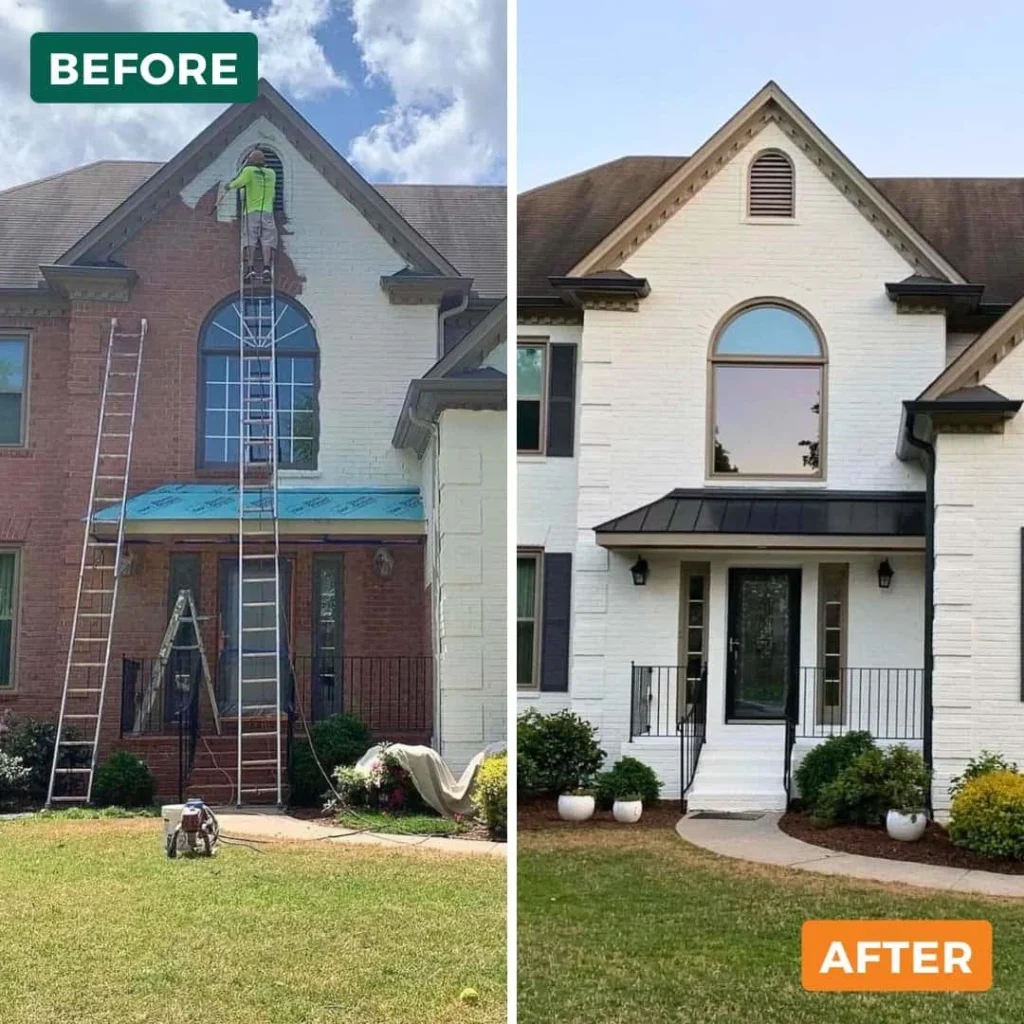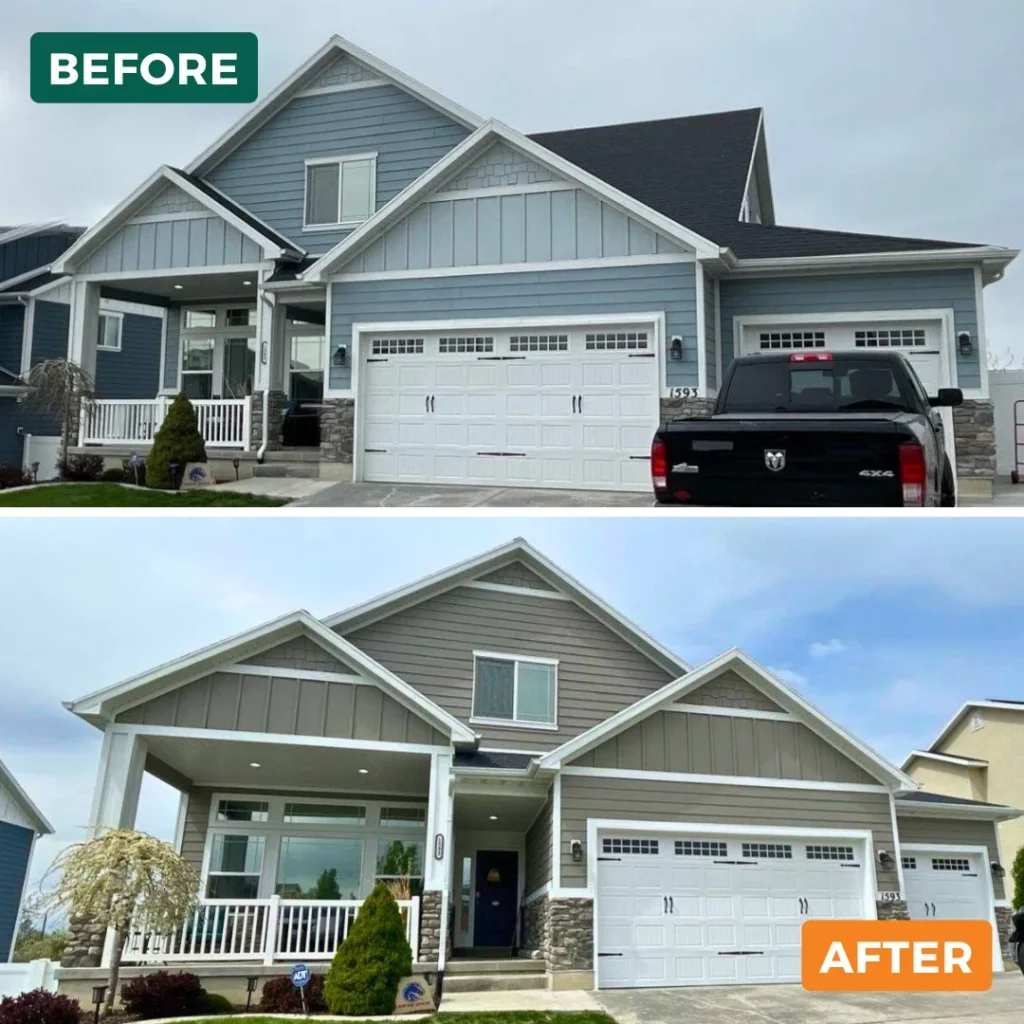Temperature, moisture, and sunlight all change how paint sticks and stays. A quick change in weather can ruin a perfect finish. Hot days dry paint too fast. Rain can wash it off. Cold air slows the process. Each of these creates weak results. The weather in your area decides the best time to paint. That’s why smart timing makes a difference. Working with exterior painters in Pittsburgh helps avoid common issues. They know how local weather changes things. They also choose paint that works best for each season.
How Temperature Impacts Paint Drying
Warm Weather Risks Like Bubbling and Peeling
Hot weather can make paint dry too quickly. When paint dries too fast, it doesn’t bond well. This can cause bubbles to form on the surface. The paint will peel away faster and look uneven. The paint also has less time to settle and create a smooth finish. If the surface is too hot when you paint, it makes the problem worse. It’s best to wait for cooler days or early mornings for a better result. Proper timing helps avoid these issues and keeps the paint looking fresh longer.
Cold Weather and Slow Curing Problems
Cold weather can slow down how paint dries. When the temperature drops, paint takes longer to cure. It may never fully dry, leaving your surface exposed to damage. The paint might feel dry on top but still be wet underneath. This can cause problems like smudging and uneven color. Cold weather also makes paint harden slower, which can affect the finish. It’s best to paint in moderate temperatures, usually between 50°F and 85°F. Choosing the right time for the job helps avoid these curing problems.
The Effect of Humidity on Paint Finish
Sticky Surfaces and Blistering from High Humidity
High humidity makes paint dry slower. When the air is too damp, it can cause the paint to become sticky. This sticks to dust and dirt, leading to a rough finish. As the paint tries to dry unevenly, it may form blisters on the surface. These blisters are air pockets trapped beneath the paint. In very humid conditions, the paint may even peel off completely. It’s better to wait for dry days or mornings when the humidity is low. This way, you’ll get a smooth, clean, and long-lasting paint job.
Dry Air and Uneven Coverage Issues
When the air is too dry, paint dries too quickly. This doesn’t allow the paint to spread evenly over the surface. The paint may start to dry before you can finish applying it, leaving streaks or lines. Dry air can also cause the paint to crack as it dries too fast. The faster the paint dries, the harder it is to get smooth coverage. It’s best to paint when humidity is balanced so the paint doesn’t dry too quickly. By picking the right time to paint, you’ll avoid these uneven and damaged results.
Why Rain or Moisture Ruins Fresh Paint
Rain Wash-Off and Wet Surface Failure
Rain can ruin fresh paint before it dries completely. If it rains too soon after painting, moisture can wash the paint away, especially if the surface is still wet. This can cause the paint to drip or run, leaving uneven spots. Even if the paint seems dry to the touch, rain can affect the curing process. This weakens the finish and causes peeling or fading. Always check the weather forecast before painting. Wait at least 24 hours for dry weather to help the paint stay set and keep it protected.
Damp Conditions Causing Mold Under Paint
Damp weather can cause mold to grow under the paint. When moisture gets trapped beneath the paint, it creates a perfect environment for mold. Mold can lead to discoloration and damage to the surface. It may not show up immediately, but can cause the paint to bubble or peel later on. To prevent mold, paint only when the weather is dry. Avoid painting on humid or rainy days. By waiting for drier conditions, you help your paint job last longer and prevent hidden damage.
Sunlight Exposure and UV Damage to Paint
Fading Colors and Chalky Residue
Sunlight can cause paint to fade over time. The ultraviolet (UV) rays from the sun break down the pigments in the paint, causing the colors to look dull. This happens especially on surfaces that get direct sunlight for long periods. The paint may lose its vibrant look and turn pale. UV rays also leave behind a chalky residue on the surface, which can be washed away. To protect your paint job, it’s important to choose UV-resistant paint or reapply a protective coat every few years, especially for areas exposed to strong sunlight.
Surface Cracks from Too Much Sun
Too much sun can dry out paint and cause it to crack. The heat from the sun makes the paint shrink, which leads to cracks on the surface. These cracks allow moisture to get underneath the paint, which can cause peeling and further damage. If your paint job gets too much direct sunlight, it may not last as long. To avoid this, try to paint in cooler months or use paint designed to handle sun exposure. This keeps your surface protected and prevents early signs of damage from the sun.
Choosing the Best Season for Exterior Painting
Spring and Fall as Balanced Options
Spring and fall are often the best times to paint the exterior of your home. The temperatures during these seasons are moderate, which helps paint dry at the right pace. The humidity is also lower, which reduces the risk of moisture getting trapped in the paint. These balanced conditions allow the paint to bond better with the surface and last longer. Spring and fall provide comfortable working conditions for painters and ensure a smooth, durable finish. These seasons are ideal for a quality paint job without the extreme temperatures.
Avoiding the Extremes of Summer and Winter
Summer and winter can cause problems when painting outside. Summer brings high temperatures, which can make the paint dry too fast. This can lead to uneven coverage and visible streaks. Winter, on the other hand, can make the paint take too long to dry, and in some cases, it may not dry properly at all. The cold also affects the paint’s ability to adhere to surfaces. It’s best to avoid painting in these extreme temperatures to prevent an uneven finish and poor long-term results.
The Right Timing for Exterior Painting with Dino Painting
The weather has a big impact on how exterior paint jobs turn out. Hot temperatures, humidity, or unexpected rain can mess up your finish or make the job take longer. We understand how to adjust for changing conditions, so your paint job will stay smooth and last longer. By timing the job right and using the proper materials, we get the best results. It’s important to choose the right season to paint so your investment holds up. Don’t risk damage to your paint job. Contact us at Dino Painting and let us handle the job for you.


